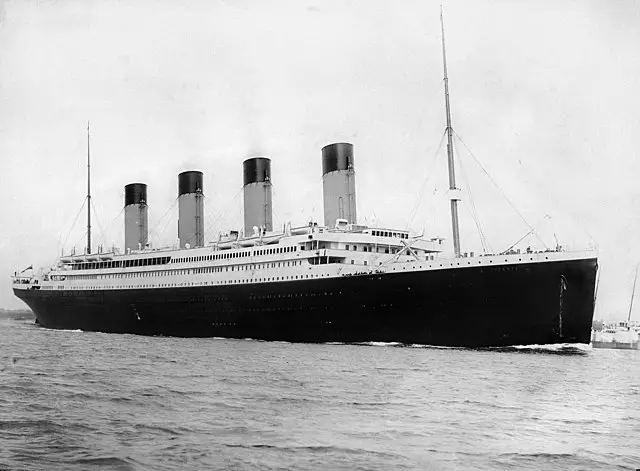In the cold, still night of April 14th, 1912, a lookout peered into the black void of the Atlantic, straining his eyes for danger. The Titanic—majestic, unsinkable—plowed forward at full speed. But Fredrick Fleet, perched high above in the crow’s nest, had a problem: he had no binoculars. In a cruel twist of fate, a missing key meant the ship’s binoculars were locked away, inaccessible. By the time Fleet spotted the iceberg, it was too late. The world’s most luxurious ship met its tragic end because of an oversight so small it’s almost unbelievable. Could a single pair of binoculars have altered the course of history?
A Simple Key, A Monumental Oversight
When the Titanic set sail on April 10, 1912, it carried an air of invincibility. Boasting cutting-edge technology and opulent luxury, the ship represented the height of human achievement. Yet, a tiny oversight—a key misplaced—would prove fatal.
David Blair, originally assigned as the Titanic’s second officer, was replaced before the maiden voyage. In the chaos of the sudden change, Blair took a crucial key with him—the key to the lookout’s binocular cabinet. When Frederick Fleet and Reginald Lee took their posts in the crow’s nest, the crucial tool for spotting hazards was locked away, inaccessible. “We could have seen it sooner,” Fleet would later testify, haunted by the thought.

Could Binoculars Have Saved the Titanic?
Some argue that even with binoculars, spotting the iceberg in time would have been impossible. On that fateful night, the water was eerily calm—no waves breaking at the iceberg’s base, a common visual cue. Yet, experts and historians believe binoculars would have given the lookouts a fighting chance. A few extra moments of warning could have been enough to veer off course or at least lessen the impact.
The Ripple Effect of One Key
The missing key is often seen as a symbol of the small mistakes that led to the Titanic’s downfall. The ship was traveling too fast through iceberg-laden waters, and warnings from nearby vessels went unheeded. Safety protocols were flawed, and lifeboats were insufficient for all passengers.
The tragedy was not the result of a single failure but a cascade of errors—human overconfidence and technological arrogance colliding with nature’s unyielding force. The key represents the danger of overlooking the small things, a chilling reminder that monumental disasters often begin with tiny oversights.
A Legacy Forged in Ice
Today, the key that might have saved the Titanic is housed in a museum—a cold, metal reminder of how history can hinge on the smallest of details. The story of the missing key has become a symbol, a lesson in humility and vigilance. In our pursuit of greatness, it reminds us to keep an eye on the details—to unlock the cabinets before it’s too late.
A Story That Endures
The Titanic’s tale continues to captivate the world—a testament to human ambition and frailty. We marvel at its grandeur, mourn its loss, and wrestle with the “what-ifs.” And somewhere in the folds of that tragic story lies a key—small, forgotten, but carrying the weight of history.
Was the tragedy truly inevitable, or did a tiny key decide the fate of over 1,500 souls? It’s a question that echoes through time, a haunting reminder of how the smallest things can change the course of history forever.

